Photos: Big Bear Solar Observatory
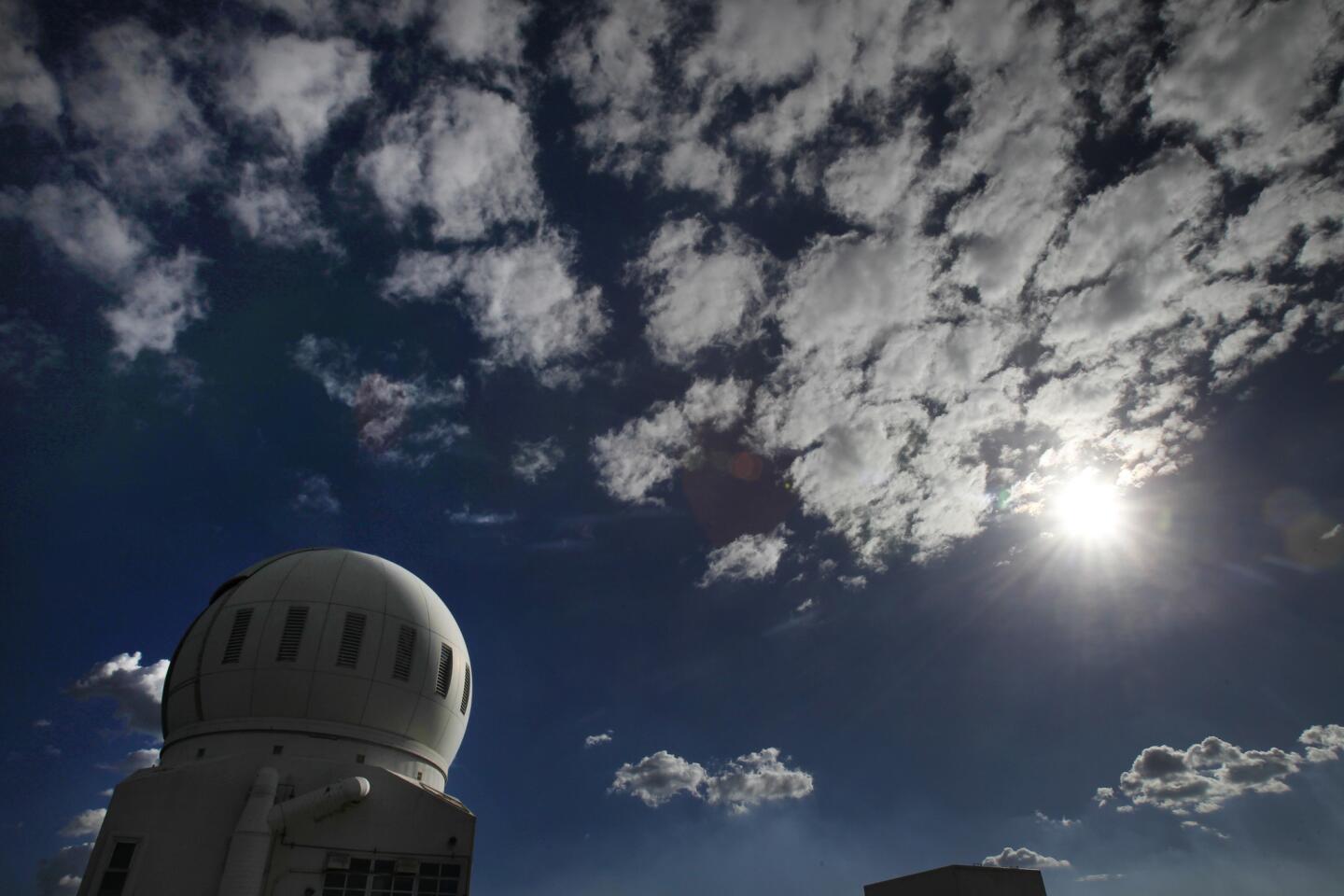
The Big Bear Solar Observatory, completing its first year in operation as one of the world’s largest and most sophisticated instruments for studying the sun, is shown on Oct. 8. (Allen J. Schaben / Los Angeles Times)
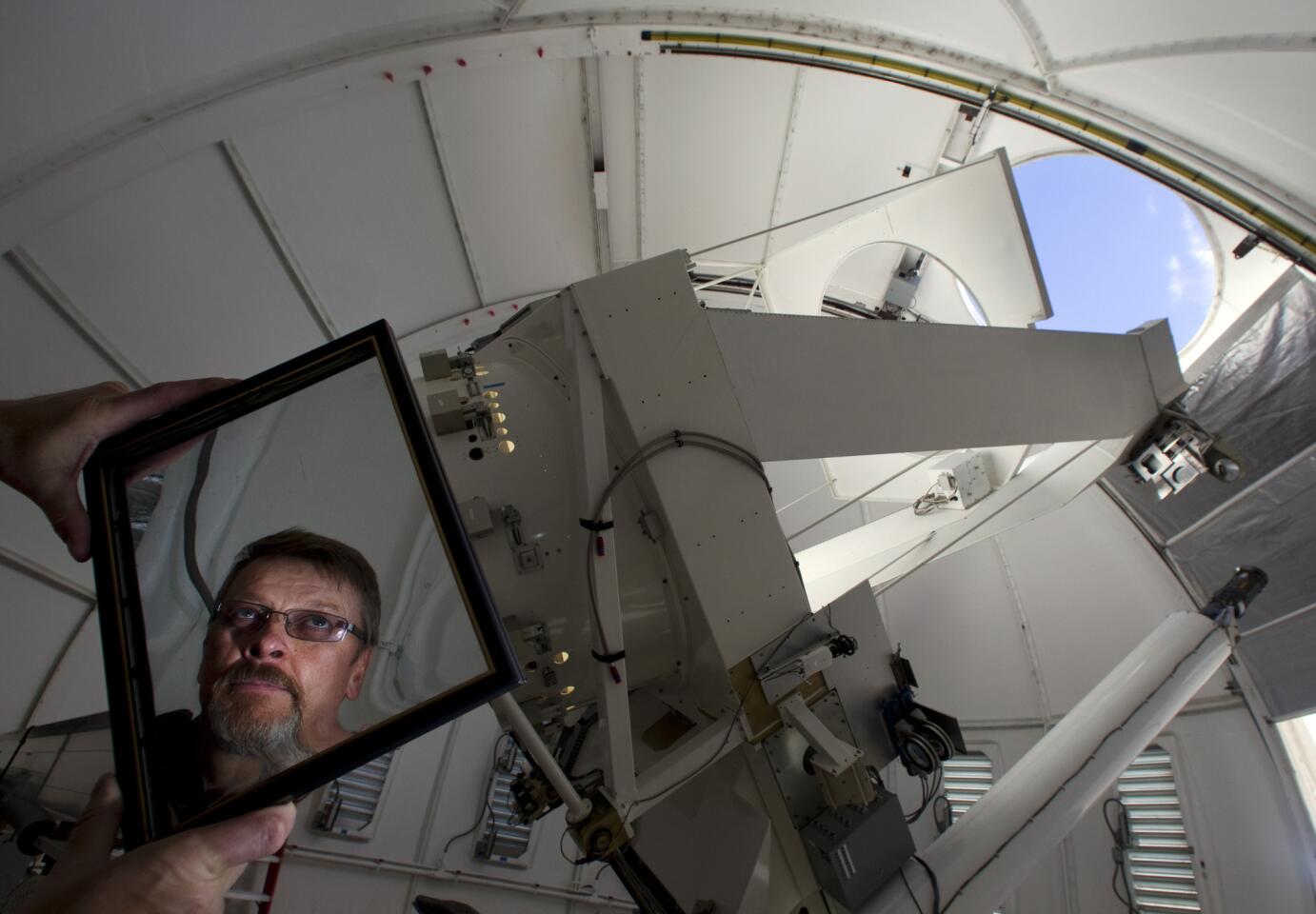
Vasyl Yurchyshyn, a research professor at the Big Bear Solar Observatory, is reflected in a high-density filter, which he uses to look at the sun through the facility’s 1.6-meter telescope. (Allen J. Schaben / Los Angeles Times)
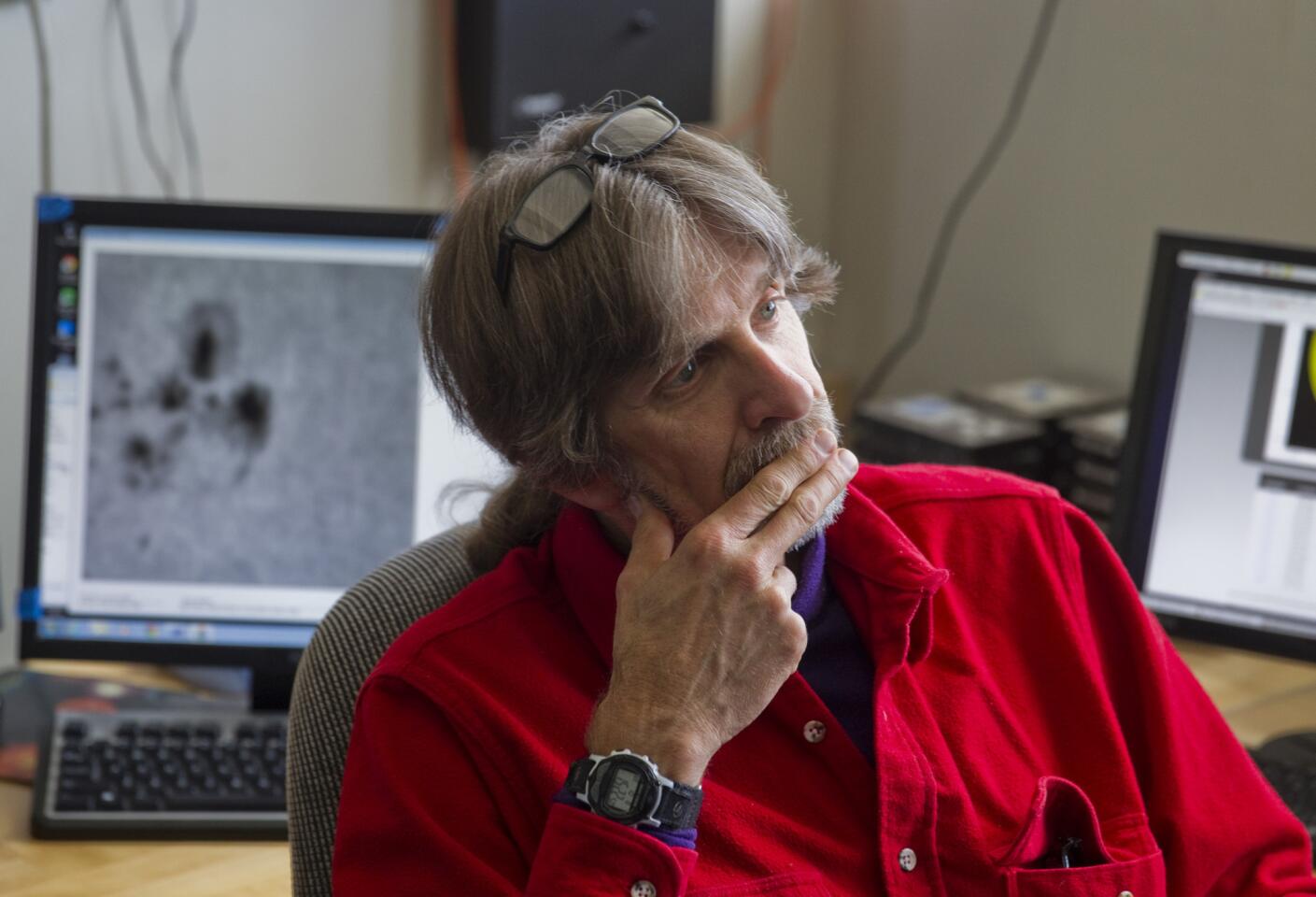
Claude Plymate, telescope engineer/chief observer at the Big Bear Solar Observatory, studies images of the sun from the facility, which sits at the end of a jetty at Big Bear Lake. It is surrounded by water, which reduces air convection that can blur images. (Allen J. Schaben / Los Angeles Times)
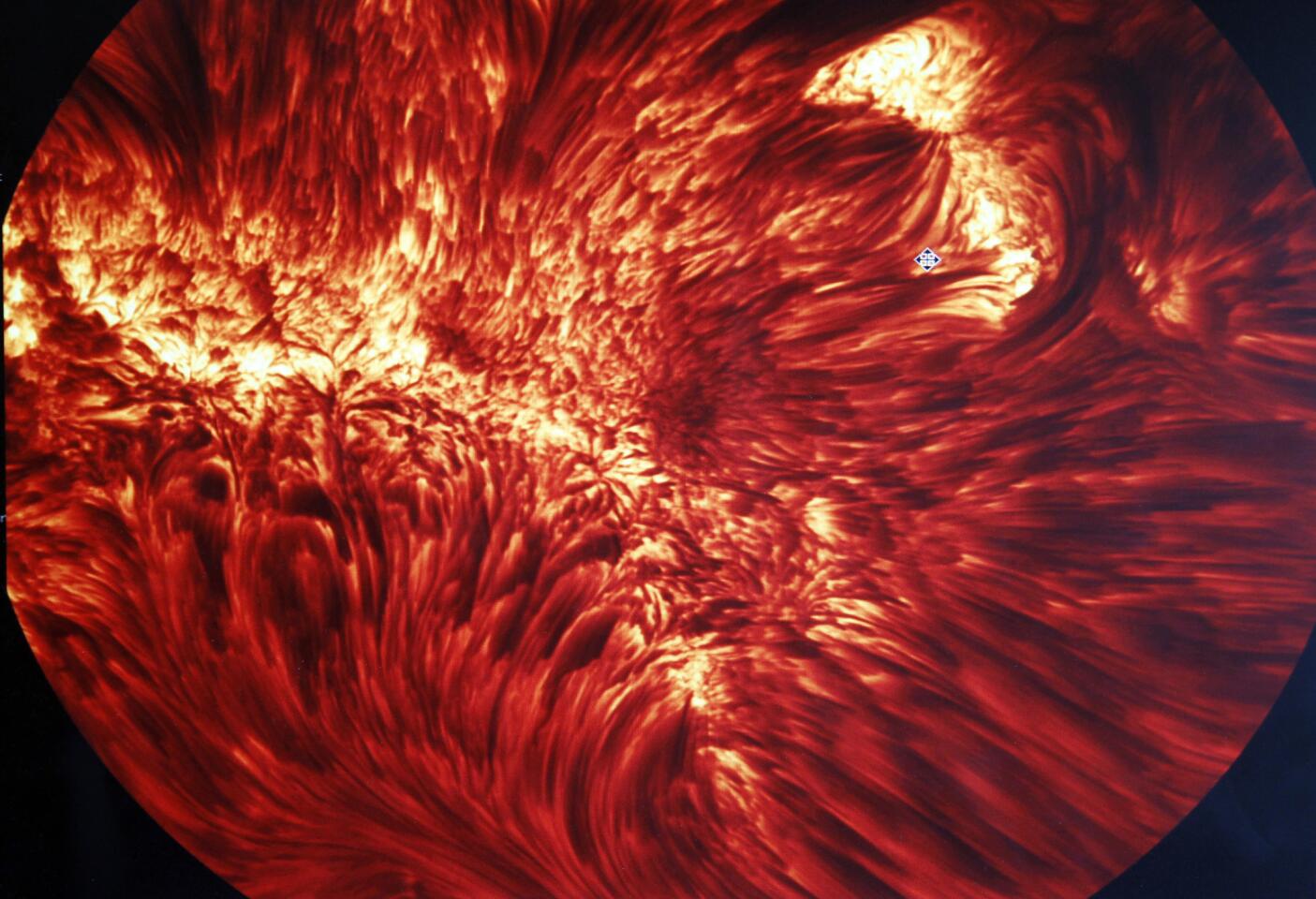
Images of sunspots are displayed on a computer screen at the Big Bear Solar Observatory on Oct. 8. The observatory offers multi-wavelength observation of sunspots and images of high-speed plasma flows and eruptions extending from the sun’s surface. (Allen J. Schaben / Los Angeles Times)
Advertisement
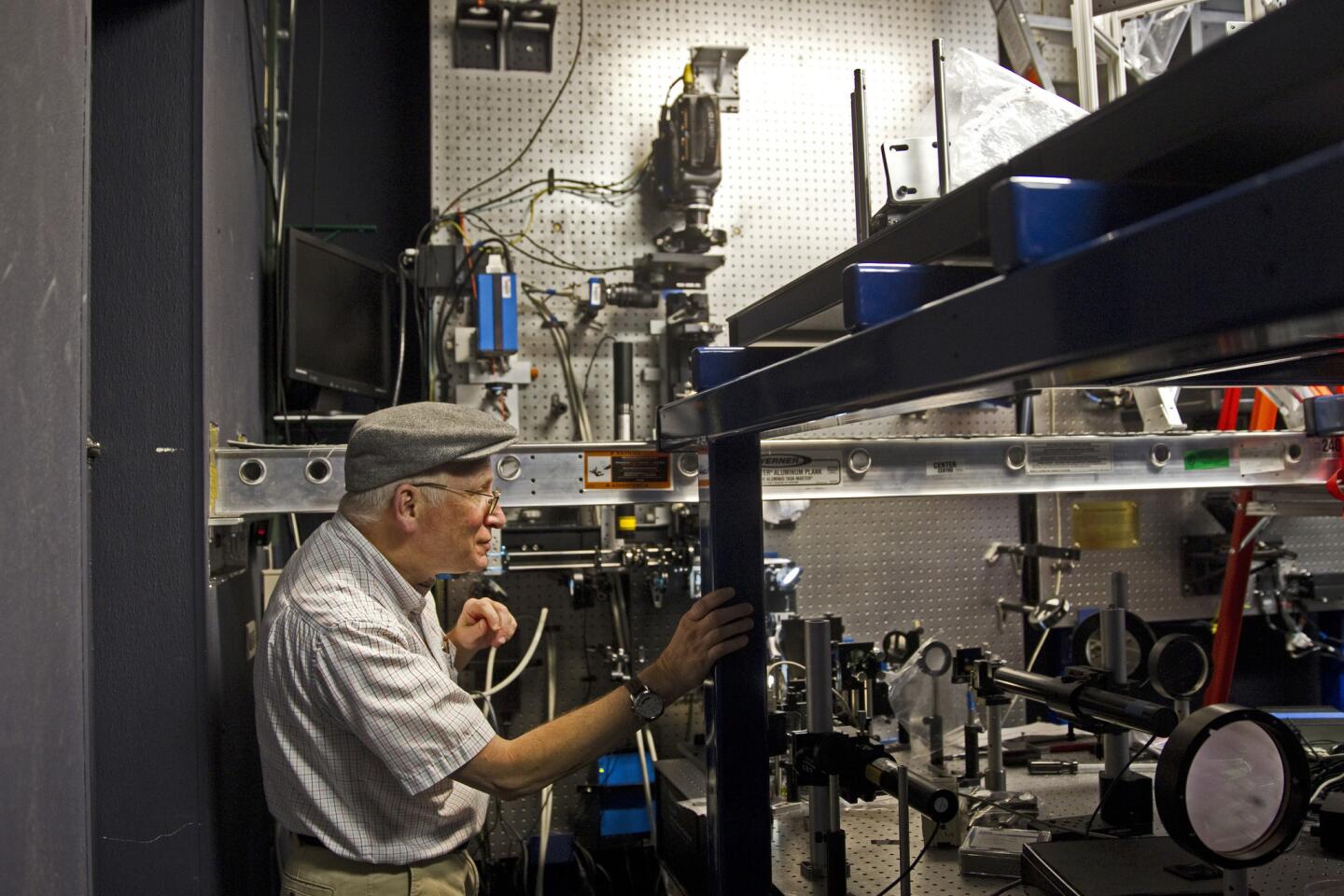
John Varsik, a research professor at the Big Bear Solar Observatory, inspects a complex alignment of cameras, mirrors and other instruments connected to the facility’s telescope. (Allen J. Schaben / Los Angeles Times)
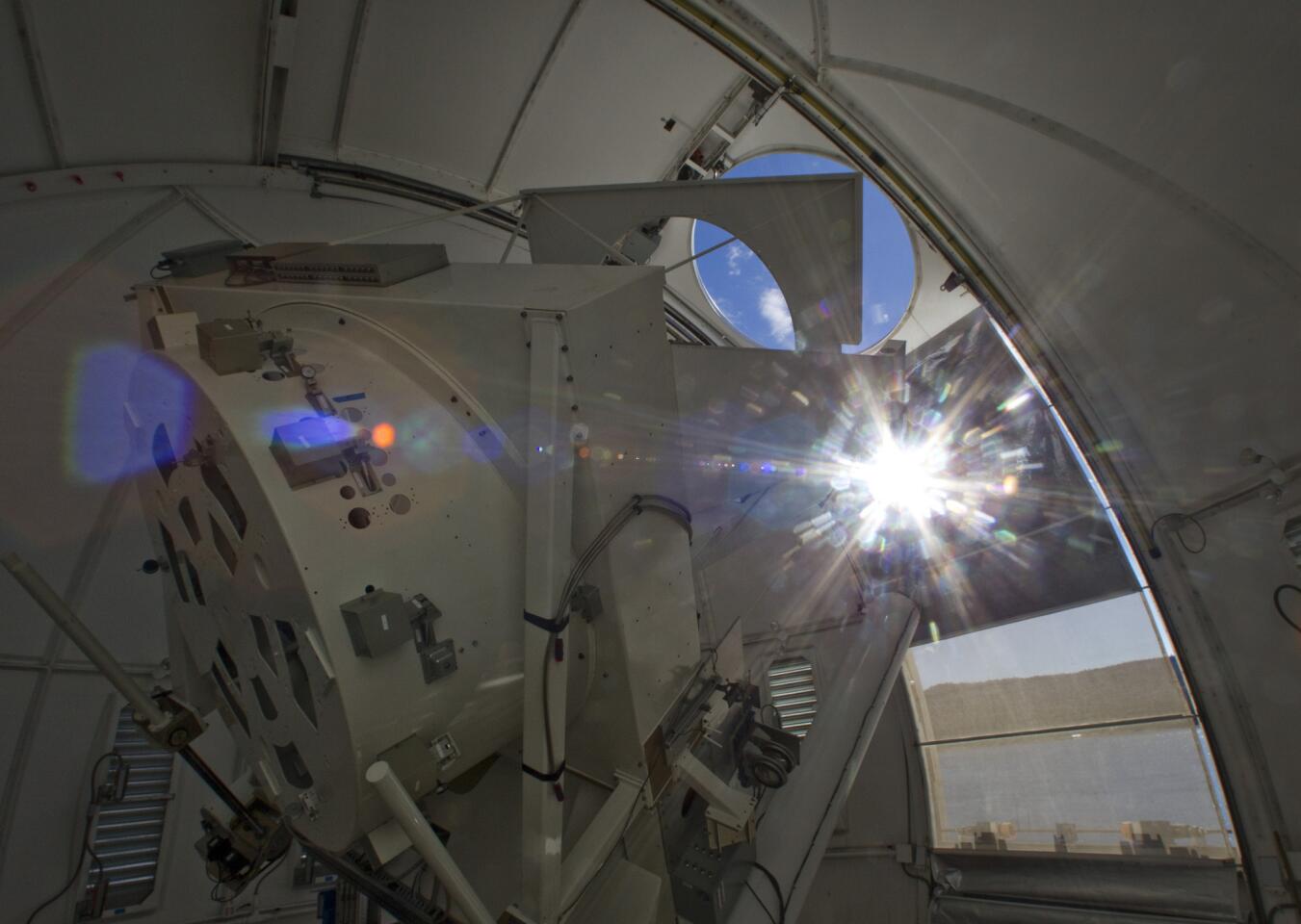
The sun shines through part of the 1.6-meter telescope at the Big Bear Observatory on Oct. 8. (Allen J. Schaben / Los Angeles Times)
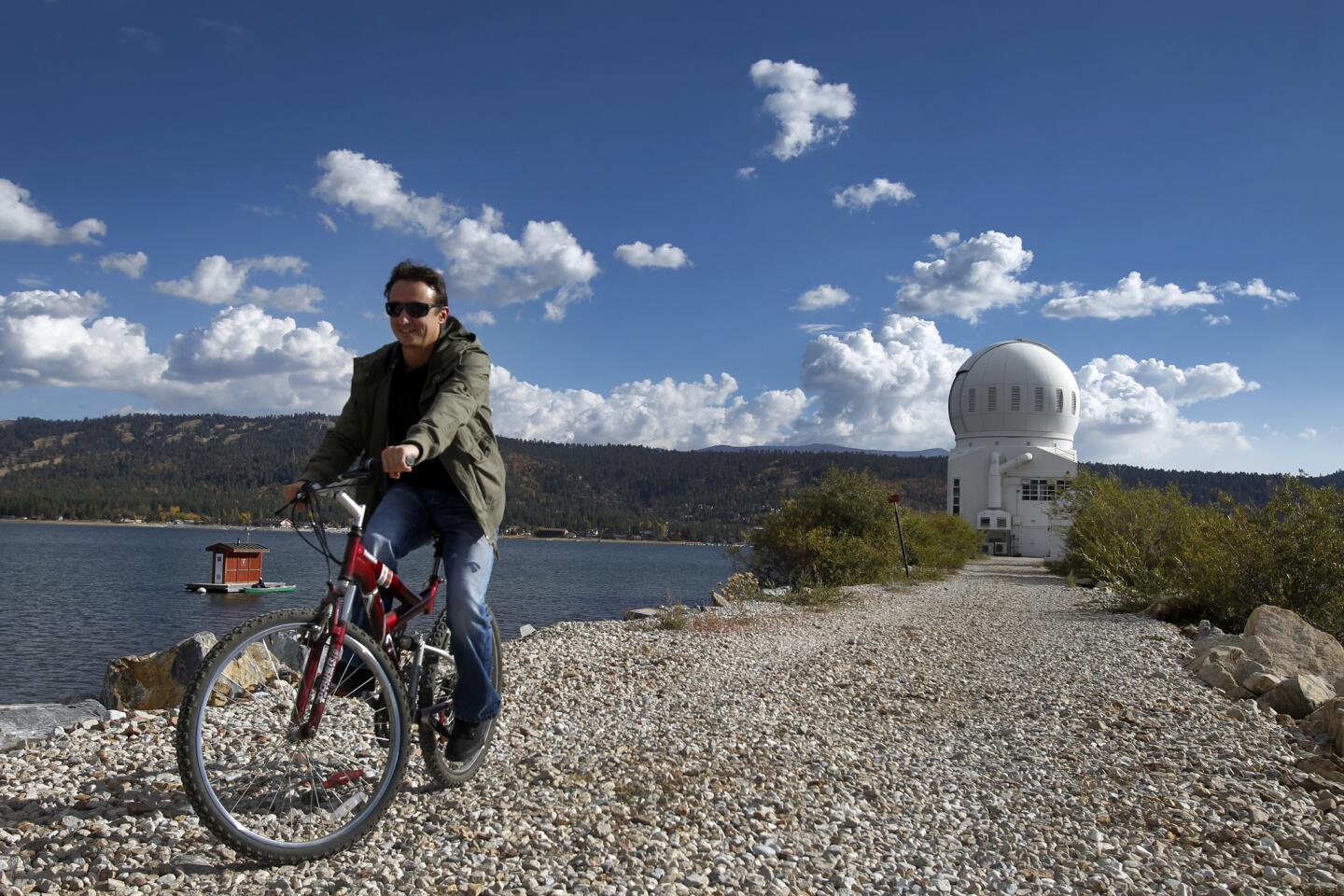
After a day of work, Nicolas Gorceix, optical engineer at the Big Bear Solar Observatory, rides his bike home on Oct. 8. (Allen J. Schaben / Los Angeles Times)
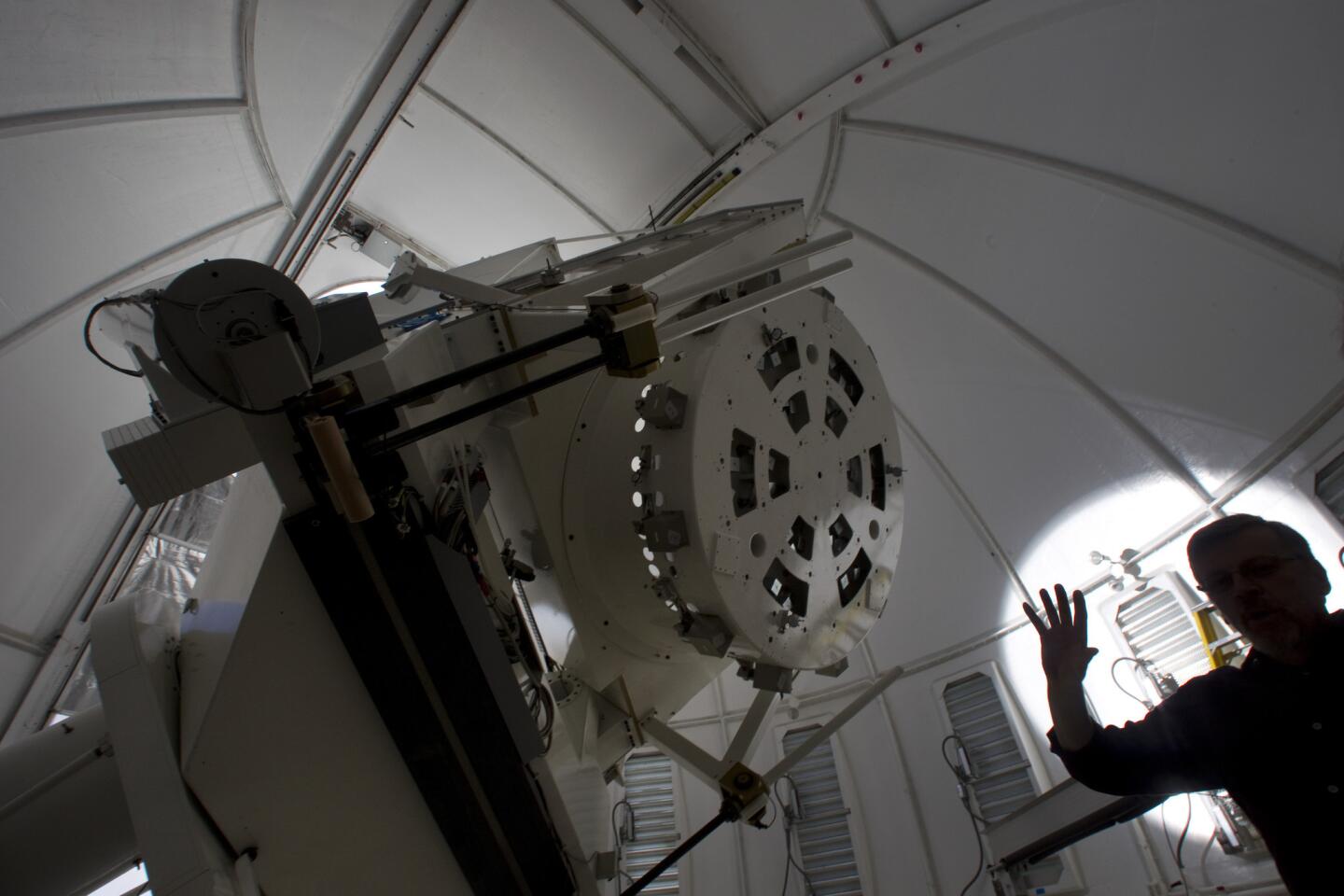
Vasyl Yurchyshyn, a research professor at the Big Bear Solar Observatory, is silhouetted by the sun as he stands next to the facility’s telescope on Oct. 8. (Allen J. Schaben / Los Angeles Times)



